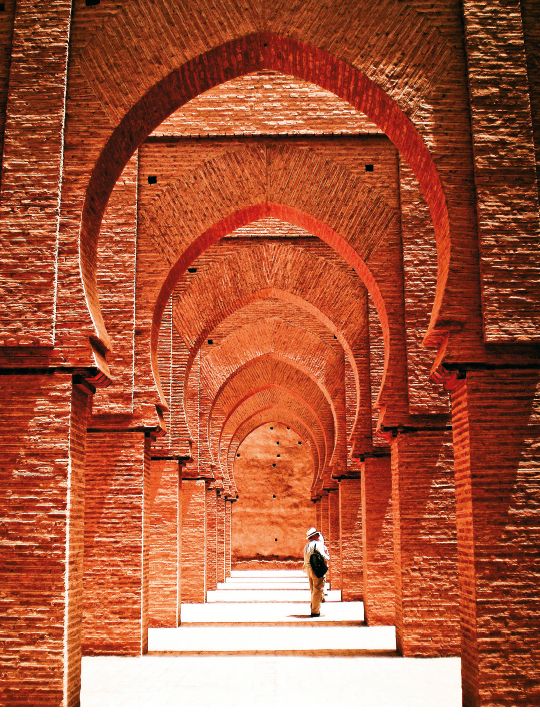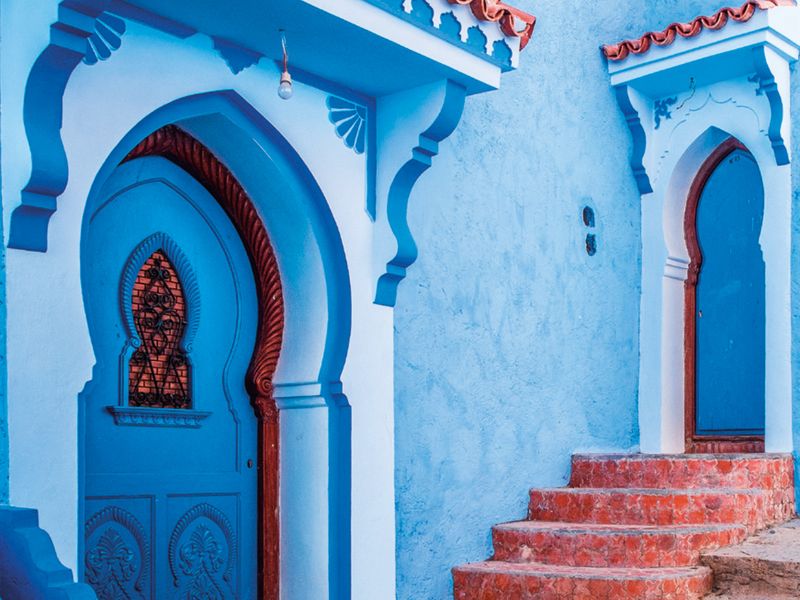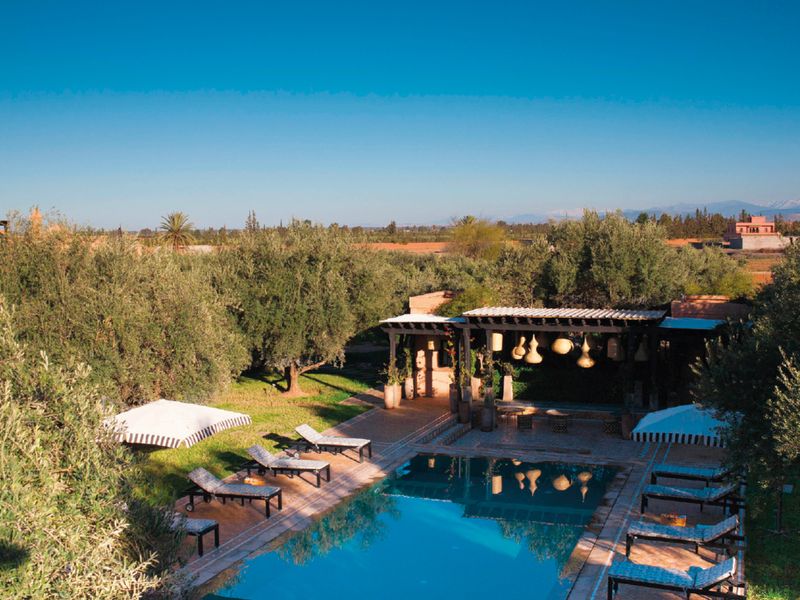
Forged by countless conflicts, insatiable trade and the tribulations of a dynamic climate, Morocco’s man-made features may not be entirely unique – but they’re altogether special. From ancient Berber pisé (mud brick) homes to the waves of Moorish, French and Arabic fads and fashions throughout the centuries, the North African nation is a melting pot of architectural ideas; the funky old medinas of Fez, the evolving surf destination of the wild Atlantic coast, and everything in between.
Each historic era has brought with it new styles without supplanting the old, making for a patchwork of modernity and authentic Old World buildings that work side by side. Zellige tiling, akin to Grecian mosaics, still curry favour with #ihavethisthingwithfloors Instagram hashtaggers and centuries-old Arabesque floral motifs are repeated ad infinitum in new high-end homes and five-star hotels. Morocco is indeed a nation of rich culture and even richer cuisine, but entire cities can draw crowds for their aesthetics above all else; and there is no better example than Chefchaouen, the 50-shade-of-blue beauty of the Rif Mountains.

The northwestern city is summed up by its moniker, which is altogether easier to pronounce. Tourists flock to The Blue Pearl for its electric hues and its contradicting stimuli, with the call to prayer resounding through the dawn air. The colour didn’t become in vogue until the 1930s, though, when an influx of Jewish refugees brought with them the belief that blue was symbolic of heaven – but it turned out to be an effective repellent of mosquitoes, averse to the appearance of running water.
Accidental pragmatism makes for a good anecdote, but form and function have been matched throughout the ages. While more modern, hasty erections wither and wear out in the region, the mud brick city of Aït Benhaddou has stood since the early 17th century on the foothills of the Atlas mountains, a vintage vantage point that typifies the architecture of southern Morocco and more recently becoming a star of screen in countless Hollywood productions (The Mummy, Gladiator and Alexander to name a few), as well as the backdrop for various episodes of Game of Thrones.
The buildings of the Unesco World Heritage Site are now facing strong rivals, however, from well-heeled visionaries in the country’s more cosmopolitan locations, with a flurry of new design denizens making their mark. The formidable Zaha Hadid has left a striking legacy all over the globe, but the so-called Queen of the Curve will have changed the face of the country’s capital when Rabat Grand Theatre is unveiled, potentially next year. Spanning 27,000 square metres of indoor space, the cultural venue is set to be Morocco’s answer to the likes of Sydney’s Opera House and London’s The Shard; an iconic landmark incorporating a 2,050-seat theatre, a smaller 520-seat theatre, creative studios and an outdoor amphitheatre space for up to 7,000 people.
Elsewhere, Casablanca is living up to its name with the box-fresh Villa Agava, an utterly modern grand design by Driss Kettani and his eponymous firm, a capacious, whitewashed, private home that’s recently captured the front pages of design publications the world over. The contemporary home was designed to explore the tenets of a traditional Moroccan space with a blend of space and privacy with its chicane entrance and the traditional inclusion of a courtyard with grey-blue zellige elements.
The left shoulder of Africa is already a feast for the eyes and must-see buildings number well into double figures, but with several notable highlights. If you’ve only time for one architectural sojourn in Marrakech, tick off Bahia Palace and the impeccable botanical garden of Jardin Majorelle where Yves Saint-Laurent’s ashes are scattered; Rabat’s Hassan Tower is possibly even more Game of Throne’s-esque than the aforementioned Aït Benhaddou; and why not stay in a renovated “riad” home before visiting another Unesco site, the ancient Medina of Fez? Just make sure your SD card has space for all the clicks.



